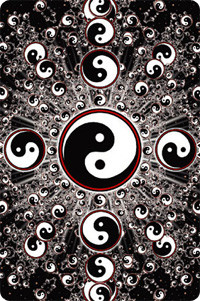Feng Shui History

Feng Shui, the intuitive art of balance and harmony,
originated thousands of years ago. Like any other form of art, its history &
origin also comprises of many interesting facts. During ancient times, the
Chinese shamans, diviners and sage-kings proclaimed the Compass, the Pa-k'ua
(eight trigrams), and the Theory of change, as the three building blocks of
Feng-shui. As per the legend, the compass was initially used for navigation,
during the ruling period of Yellow Emperor in China.
Later, this navigational compass was modified and used in Feng Shui. At the
outset of Chou dynasty (1122-207 BCE), King Wen originally employed pa-k'ua to
illustrate patterns of change in the natural world. By 8th century BC, Chinese
started using the pa-k'ua and the theory of change to encourage the flow of
positive energy in a city or a palace. Consequently, the kingdom prospered in
harmony and wealth. During the period of Han dynasty (206 BCE-219 CE), the art
of K'an-yu, the study of energy carried in landforms, was founded.
The study was supported by the Taoists like Huang-shih Kung and Ch'ing Wu, who
said that geological bodies, mainly mountains and rivers, are full of essential
energy. Dragon veins are known to be the pathways of energy in mountains, while
those in waterways are called Water dragons. In those times, the Chinese
followed this theory on land's energy, not only to make the sites for kingdoms,
but for the burial sites as well. The T'ang dynasty (618-906 CE) and Sung
dynasty (960-1279 CE) were proved to be the golden periods of k'an-yu.
During the times of T'ang, the geomantic compass (Lo-p'an), along with its
twenty-four directions and seventeen rings, was integrated into K'an-yu
practice. Yang Yun-sun was the chief k'an-yu master of the period. He was the
one, who founded the Three Periods (San-yüan), Three Combinations (San-ho) and
Feng-Shui schools. He also conceived that one could chart the energy in
mountains simply by looking at the features of contiguous valleys. In the Sung
period, Hsü Jen-wang prolonged the idea of 'Three Periods School', to
incorporate buildings and landforms.
He founded the Hsüan-k'ung (Mysterious Subtleties) school to evaluate buildings
by using the Flying Stars System, which mingles information about the facing
direction of a building, the year of its construction and the pa-k'ua in order
to trace favorable and unfavorable energies within the building. The Hsüan-k'ung
School became popular seeing that cities developed outlying from natural
landscapes. The last development phase of Feng-Shui was overlapped by the Ch'ing
dynasty (1644 -1911) and the Republic China period (1911-1949).
In the beginning of Ch'ing period, Pa-chai (Eight Mansions) school was
established by Jo-kuan and Tao-jen. The theory of Pa-chai is exclusively
applicable to residences; it also endeavors to go with the occupant's guardian
star. Throughout the Republic years, the Hsüan-k'ung school used the principles
of Landform Classification, the compass and the Flying Stars system, to assess
the Feng-shui of buildings.
In the same period, the San-yüan school extended to take in the study of
residential and commercial buildings. The San-ho school in contrast, remained
committed to the study of mountains, valleys and waterways. Acknowledged as the
Four Schools of traditional Chinese Feng Shui, the schools of San-yüan, San-ho,
Hsüan-k'ung and Pa-chai are still practicing the studies. Infact, today, Feng
Shui has become one of the most widely used art forms. | |
Other Categories
Feng Shui
Feng Shui Architecture
Feng Shui Home
Feng Shui Office
Feng Shui Products
Feng Shui Types
Feng Shui Colors
Feng Shui Cures
Feng Shui Decoration
Feng Shui Design
Feng Shui Elements
Feng Shui Garden
Feng Shui Gifts
Feng Shui Plants
Feng Shui Principles
Feng Shui Symbols
Feng Shui History
What is Feng Shui
Yin and Yang
|

